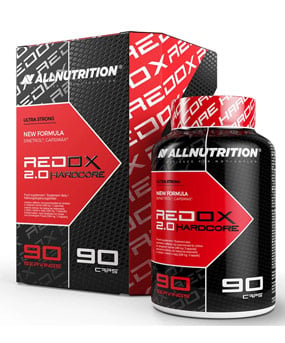Streszczając poniższy artykuł, wątroba nie działa na zasadzie filtra do kawy, na którym to filtrze osadzają się zbędne elementy. Można ją raczej porównać do wielkiej chemicznej fabryki, gdzie przetwarza się jedne związki w inne, tak by można było je bezpiecznie usunąć z organizmu wraz z moczem i potem.
Podane są również wyniki badań na zawartość toksyn i metali ciężkich w różnych częściach zwierząt. Wynika z nich że wątroba, czy nerki zwierząt zawierają tyle samo toksyn/metali ciężkich, co inne części zwierzęcia.
Podsumowując, od czasu do czasu polecam włączyć wątróbkę do diety. Zwłaszcza ze względu na dużą zawartość mikro i makroelementów, witamin, białka - prawie 20g w 100g, chociaż profil aminokwasowy ma trochę gorszy niż pierś z kurczaka, ale za to wątróbki są o połowę tańsze.
Artykuł skopiowany ze strony: http://www.marksdailyapple.com/does-the-liver-store-toxins/ Aby obejrzeć wyniki badań (PDFy) trzeba wejść w artykuł z linku.
Liver confuses and confounds many of us. It looks weird, gives off an odd mineral smell, and has a unique texture. We try to reconcile our horrible memories of Mom’s bone-dry renditions of the stuff with all the ethnographic literature describing how hunter-gatherers share precious slivers of the raw trembling organ immediately after a kill. We appreciate and acknowledge the superior nutrient profile of four ounces of beef liver compared to five pounds of colorful fruit even as the shrink-wrapped grass-fed lamb liver direct from the organic farm sits in the freezer untouched. And then we wonder whether it’s even safe to eat, because, you know, it’s the “filter” – the only thing standing between an onslaught of environmental toxins and our vulnerable bodies – and filters accumulate the stuff they’re meant to keep out. See colanders, coffee filters, water purifiers. Liver, then, is many a Primal eater’s Everest. Tantalizing but fraught with seeming danger. Okay, the question:
Mark,
I was reading your post about organ meats. I have always heard liver was nutritionally valuable, but I hear the same thing about bread.
Maybe I am wrong, but isn’t the liver a filter? Doesn’t it filter poisons and toxins from the body? If I eat liver, am I ingesting the poisons and toxins of the animal? Seems to me there will always be residual poisons in liver. What are your thoughts on this?
Chris
To call the liver a simple filter is incorrect. If we want to maintain the metaphor, it’s more like a chemical processing plant. The liver receives shipments, determines what they contain, and reacts accordingly. It converts protein to glucose, converts glucose to glycogen, manufactures triglycerides, among many other tasks, but its best-known responsibility is to render toxins inert and shuttle them out to be expelled – usually in the urine via the kidney. It doesn’t just hang on to toxins, as if the liver is somehow separate from the body and immune to contamination. The liver is part of the body! If your liver contains large amounts of toxins, so do you!
Okay, so we’ve established that the liver is a processing plant by design, rather than a physical filter whose express purpose is to accumulate toxins, but what about animals raised in industrial, intensive operations? The liver from a pasture-raised cow with a perpetually cud-filled maw can undoubtedly handle its relatively light toxic load; the liver from a CAFO-cow feeding on grain and exposed to environmental pollutants is surely another matter entirely. Right? Sorta, although it’s more complicated than that.
The liver can definitely accumulate heavy metals, but it is not alone in that, nor does it always particularly excel. A 2004 study (PDF) of liver, kidney, and lean meat from cattle, sheep, and chickens randomly selected from ranches in Lahore, Pakistan, found that all three tissues accumulated significant amounts of certain metals. Let’s see how the metals were distributed throughout the various cuts of beef, since that’s what most of us are eating for liver:
Beef liver contained 52 ppm arsenic, 0.42 ppm cadmium, 2.18 ppm lead, and 31.47 ppm mercury. Beef kidney contained 47 ppm arsenic, 0.9 ppm cadmium, 2.02 ppm lead, and 50.65 ppm mercury. Beef lean meat contained 46.46 ppm arsenic, 0.33 ppm cadmium, 2.19 ppm lead, and 62.39 ppm mercury. So, liver accumulated the most arsenic (but not by much), less cadmium than kidney but more than lean meat, and significantly less mercury than kidney and especially the lean meat. All three cuts contained roughly equal levels of lead.
However, another study (PDF) on cattle raised on pasture in the vicinity of metallurgical plants (and their fallout) in the Slovak Republic found that the liver did accumulate significantly higher concentrations of lead, cadmium, copper, zinc, iron, and nickel than muscle meat. What does this tell us? Don’t eat heavy metal contaminated beef, especially liver and kidney; any and all cuts of the animal will accumulate dangerous levels of heavy metals if the animal is exposed to inordinate amounts.
Another study (PDF) examined how aflatoxin, when fed to a cow, was distributed throughout the animal’s tissues, with particular emphasis on the internal organs. Researchers dosed a 160 kg calf with 52 mg aflatoxin per day for five days, then slaughtered the animal and analyzed its tissues for aflatoxin levels. Aflatoxin was found in all cuts, but it was concentrated mostly in the kidneys and, to a lesser extent, the liver. Lean muscle meat contained 12.9 ng/g aflatoxin, heart contained 16 ng/g, spleen contained 18.5 ng/g, kidney contained 145 ng/g, while the liver contained 47.1 ng/g. So, eating a 100 gram portion of liver from this calf would give you 4.6 mg aflatoxin, which is pretty high. Not enough to kill you (the LD50 for baboons is 2 mg/kg bodyweight) on the spot, but it’s probably enough to cause some problems if you make eating aflatoxin-contaminated beef liver a regular habit. Luckily, commercial cattle ranchers aren’t dosing their cattle with 52 mg aflatoxin per day, and aflatoxin doesn’t occur naturally in pasture. It’s a mold that grows on grain stored in damp, humid conditions. Corn, especially improperly-dried corn stored in tropical or sub-tropical regions, is particularly susceptible to aflatoxin.
Those are the worst-case scenarios. Either the researchers purposely dosed the test animals with massive amounts of toxins or they selected subjects from heavily-polluted areas. Most meat and liver you get comes from animals raised in comparatively cleaner (if not more humane) conditions. Not even the staunchest corn-and-candy feeding cow ranchers want their animals eating aflatoxin-contaminated corn or munching on lead-and-mercury infused feed. It would be bad for business and they monitor this type of thing.
Still, people worry. Just to be sure, let’s take a look at studies on toxin accumulation in the livers of free-living livestock, as opposed to livestock living in contrived conditions. One study, which looked at cadmium, lead, and mercury levels in the organs and meat of healthy horses, cattle, and pigs, found that heavy metal accumulation was generally higher in the liver but not enough to affect human health. Another examined lead and mercury residues in livers and kidneys of Canadian chickens, cows, and pigs; all levels were below the official Canadian tolerance of 2 ppm for lead and 0.5 ppm for mercury. Both studies are from the mid-70s, but more recent studies looking at mercury accumulation in cattle have had similar results. Livestock, even CAFO livestock, just aren’t exposed to toxic levels of heavy metals.
Liver can accumulate toxins and heavy metals, but so can every other part of the animal. If you avoid liver because of toxins, you should probably avoid the rest of the animal, too. Besides, liver isn’t an everyday type of cut. It’s high in vitamin A and copper, high enough that eating a half pound a day is excessive and counterproductive, even without any toxins getting involved. Note that an animal only has one liver, and eating large amounts of it every day is evolutionarily novel. Traditional cultures didn’t prize liver because it was easily obtainable in large amounts, you know. It was a nutrient-dense treat, so consume it accordingly – as a weekly delicacy to be savored and enjoyed. As long as you’re avoiding animals in polluted, toxic environments (and I’m not talking CAFOs here; I’m talking industrial waste and heavy metal runoff) eating contaminated food (which you should be doing anyway, even if you don’t eat liver!), liver is a safe addition to your diet. Livers from organic, pasture-raised animals are obviously going to be tastier (almost sweet, in my experience), more nutritious, and cleaner, but I think you can safely eat the occasional liver meal from conventionally raised animals, too.
How often do you eat liver? Are you worried about toxins? Did you realize the liver isn’t like a simple filter, but instead like a processing plant?





 Krzysztof Piekarz
Krzysztof Piekarz






